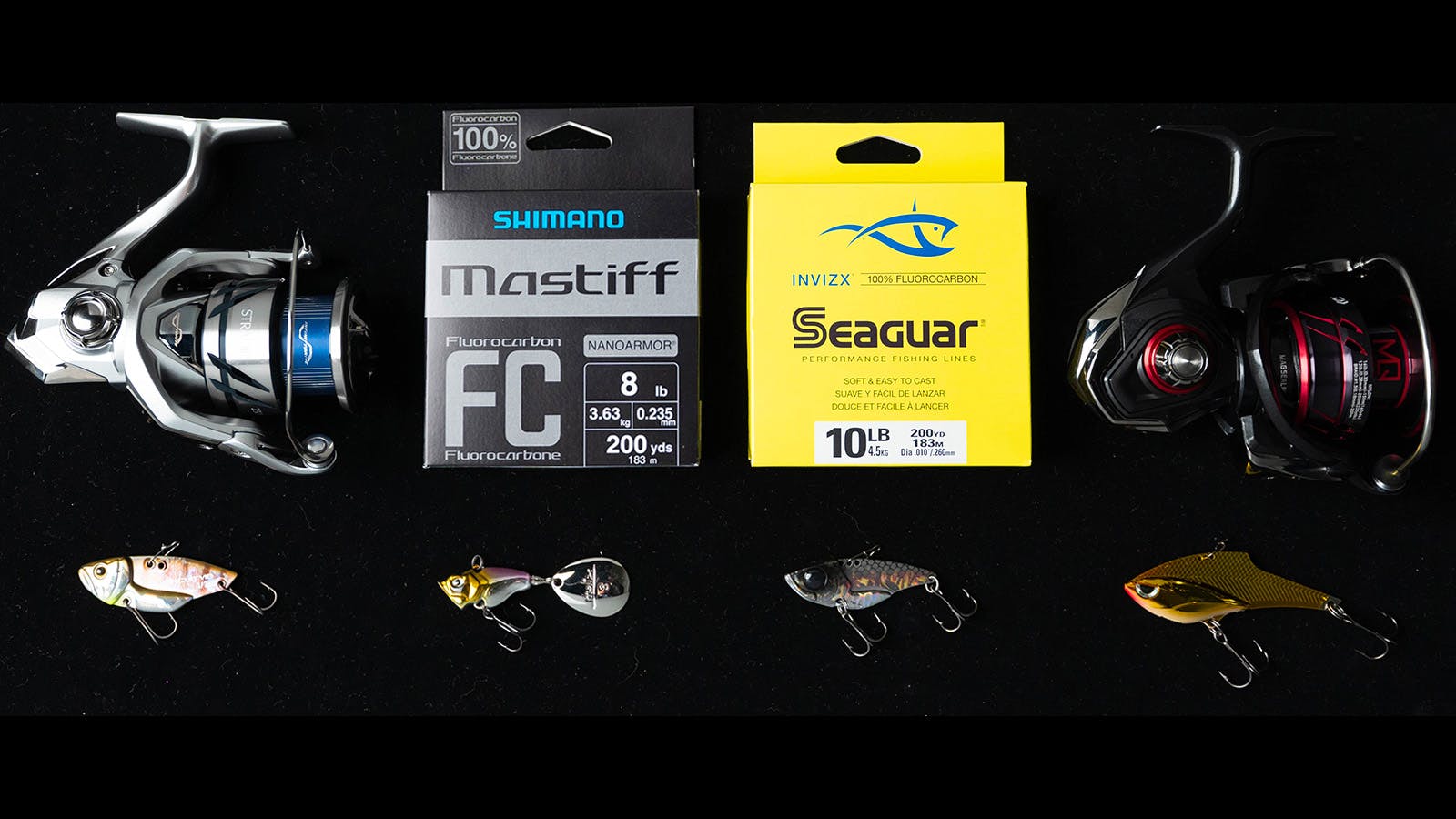
Blade Baits: Mastering the Art of Cold Water Fishing
Fishing in cold water environments presents unique challenges, but blade baits can turn these conditions into an angler's advantage. These small but effective lures are a game-changer in the world of fishing, especially in colder temperatures when fish become less active. This comprehensive guide delves into the essentials of blade baits, offering insights into their features, optimal usage, and practical fishing strategies.

Blade baits, characterized by their slim, flat metallic bodies and a distinctive vibrating blade at the front, are highly valued in the fishing community for their versatility and effectiveness. These lures are expertly crafted to emulate the movement and appearance of small baitfish, an essential trait that makes them irresistible to a wide variety of fish species. The vibrating action of the blade, triggered by the angler's technique, creates a visual and sensory appeal in the water, closely mimicking the natural movements of live prey.
Available in a diverse range of sizes and colors, blade baits offer anglers the flexibility to target different species in various fishing conditions. Whether fishing in deep, murky waters or shallow streams, there's a blade bait suitable for every scenario. The variety in size allows anglers to match the lure to the prey size in a particular body of water, a crucial factor in successful fishing. Similarly, the color options enable the lure to stand out or blend in, depending on the clarity and color of the water, as well as the lighting conditions.
What sets blade baits apart is their ability to attract fish in both cold and warm water conditions, making them a year-round tool in an angler's arsenal. Their design allows for effective use in various fishing techniques such as vertical jigging in deep waters or steady retrieves in shallower areas. This adaptability makes blade baits a go-to choice for anglers targeting species like bass, walleye, and pike, among others.
In essence, blade baits are not just another lure; they are a testament to the ingenuity in fishing tackle design, combining visual appeal with a lifelike action that appeals to a fish's predatory instincts. Their enduring popularity stands as a testament to their effectiveness, making them a staple in the tackle boxes of discerning anglers worldwide.
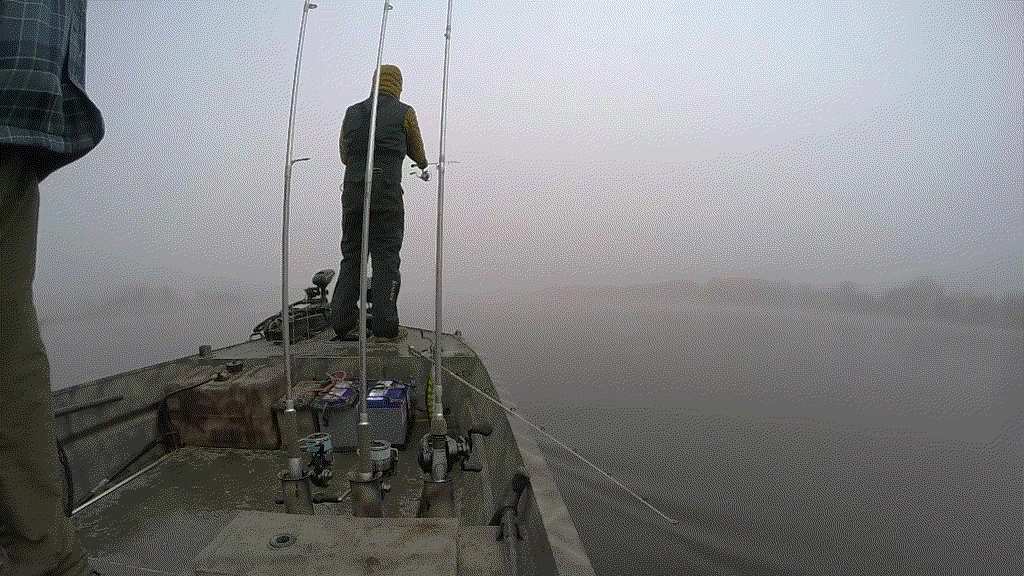
Blade baits are particularly effective in cold water conditions, a time when fish tend to be less active and more sluggish. In such environments, fish are often reluctant to expend energy chasing fast-moving baits, making the unique action of blade baits especially appealing. The design of these lures allows them to be fished close to the bottom, where cold-water species are likely to be found. By employing subtle yet deliberate movements, anglers can generate enticing vibrations and movements that mimic the natural prey of these fish, drawing their attention even in a state of reduced activity.
The optimal use of blade baits in these conditions involves a technique that requires a nuanced approach, often involving gentle lifts and drops of the rod tip. This method creates a jigging motion that makes the blade vibrate and flutter seductively, closely resembling the movements of a wounded or struggling baitfish. This subtle presentation is key in colder waters where overaggressive tactics might be less effective.
Moreover, blade baits' versatility extends to their ability to perform in various depths and water clarity. Whether fishing in deeper, murky waters or shallower, clearer streams, the reflective quality and vibration of blade baits can penetrate these diverse environments, making them visible and attractive to fish. This adaptability is particularly useful during seasonal transitions when water temperatures and conditions can change rapidly.
In essence, blade baits are a standout choice for anglers fishing in colder waters, offering a perfect blend of subtlety and allure that can entice even the most inactive fish. Their ability to mimic natural prey with minimal movement makes them an indispensable tool for winter fishing or during any period when water temperatures drop, and fish activity decreases.
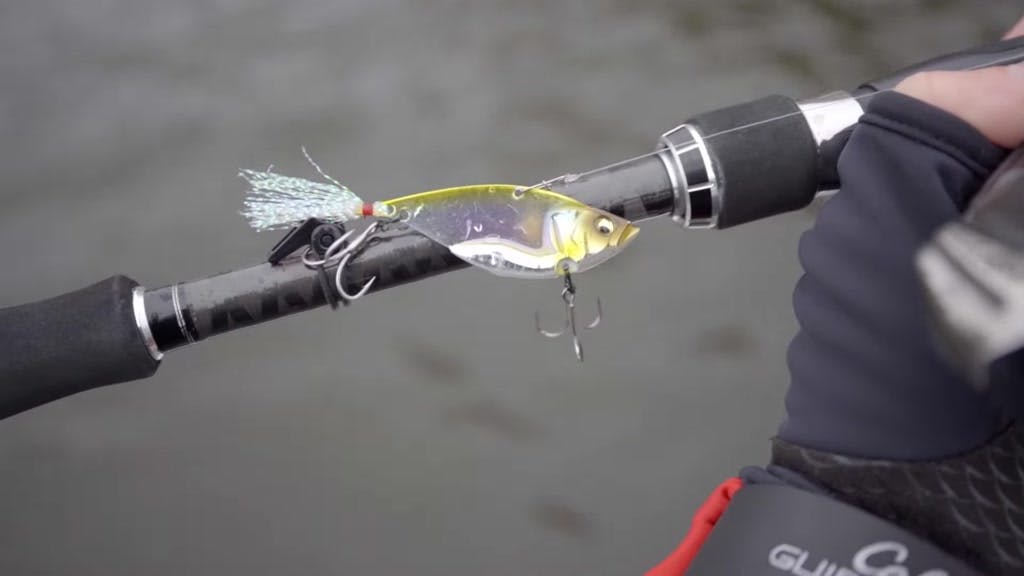
Blade baits are renowned for their effectiveness when used with specific techniques that capitalize on their unique design and action. The primary and perhaps the most popular method of using these lures is the lift-and-fall technique. This approach is relatively straightforward but requires skill to perfect. To execute, an angler casts the bait out and allows it to sink all the way to the bottom. Once it settles, the rod tip is slowly lifted, causing the bait to rise and vibrate enticingly. Then, by lowering the rod tip, the bait is allowed to fall back down, mimicking a dying or injured baitfish — a movement irresistible to predatory fish.
Another equally effective strategy is the yo-yo retrieve. This method involves a more dynamic action, where the angler quickly lifts the rod tip, causing the blade bait to shoot upwards and vibrate rapidly. Following this quick lift, it's crucial to let the bait fall back down in a controlled manner while keeping the line taut. This technique not only simulates an escaping prey but also allows the angler to maintain constant contact with the lure, making it easier to detect even the slightest of strikes from following fish.
Both techniques can be varied in speed and intensity to match the activity level of the target fish. In colder water or when fish are less active, slower and more deliberate movements are often more successful. Conversely, in warmer conditions or when targeting more aggressive fish, quicker and more frequent lifts can provoke reactionary strikes.
Moreover, these techniques can be adapted to different depths and structures. For instance, in deeper waters, longer pauses on the bottom might be more effective, while in shallower areas, quick, repetitive movements can be more enticing. The versatility of blade baits allows anglers to experiment with these techniques across various environments, making them a versatile choice for different fishing conditions.
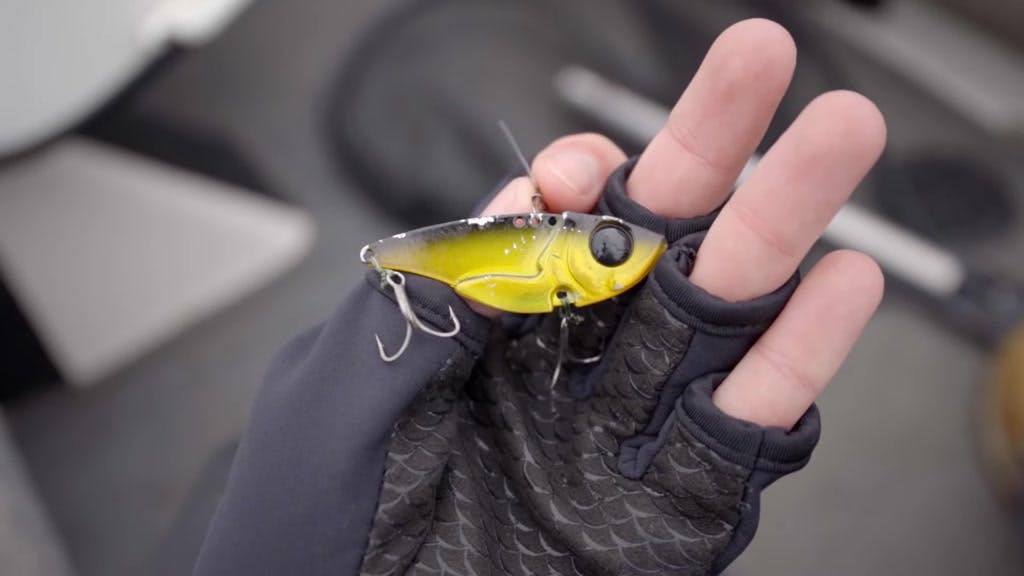
Blade baits, with their unique design and enticing action, can be remarkably effective when fished correctly. Here are some pro tips to enhance your success with these versatile lures:
Slow and Steady Wins the Race
- Importance of a gradual retrieve: A slow, methodical retrieve allows the blade bait to closely mimic the movements of natural prey, making it more appealing to predatory fish.
- Technique refinement: Practice maintaining a steady rhythm and speed during retrieval, as erratic movements can sometimes deter fish rather than attract them.
Vary Your Approach
- Adapting to conditions: Different speeds and retrieval patterns can yield varying results, depending on factors like water temperature, time of day, and fish activity.
- Experimentation: Regularly switch up your retrieval speed — from a slow drag to a brisk pull — and observe the responses. This helps in identifying the most effective pattern for the day.
Sensitivity is Key
- Choosing the right rod: A sensitive rod is crucial for blade bait fishing as it allows you to feel even the most subtle bites and strikes.
- Enhanced detection: Opt for a rod with a good balance of strength and sensitivity to ensure you don't miss those crucial bites, especially when fishing in deeper or murkier waters.
Match the Hatch
- Mimicking local prey: Select blade baits that resemble the local baitfish in both size and color. This increases the chances of fooling wary or discerning fish.
- Observational tactics: Spend time observing the environment and baitfish patterns. Tailor your lure choice to match the prevalent forage in the water you're fishing.
Additional Tips for Blade Bait Mastery
- Weather considerations: Pay attention to weather patterns as they can significantly affect fish behavior and, consequently, the effectiveness of different blade bait techniques.
- Depth exploration: Don't hesitate to explore various depths with your blade bait. Fish may be suspended at different levels depending on the time of day and season.
- Keep it sharp: Regularly check and sharpen the hooks on your blade baits. A sharp hook significantly increases the chances of a successful hook-set.
By incorporating these pro tips into your blade bait fishing strategy, you can significantly enhance your effectiveness on the water. Whether targeting bass in a local pond or walleye in a sprawling lake, these tactics will help you make the most of your blade bait lures, leading to more successful and enjoyable fishing trips.
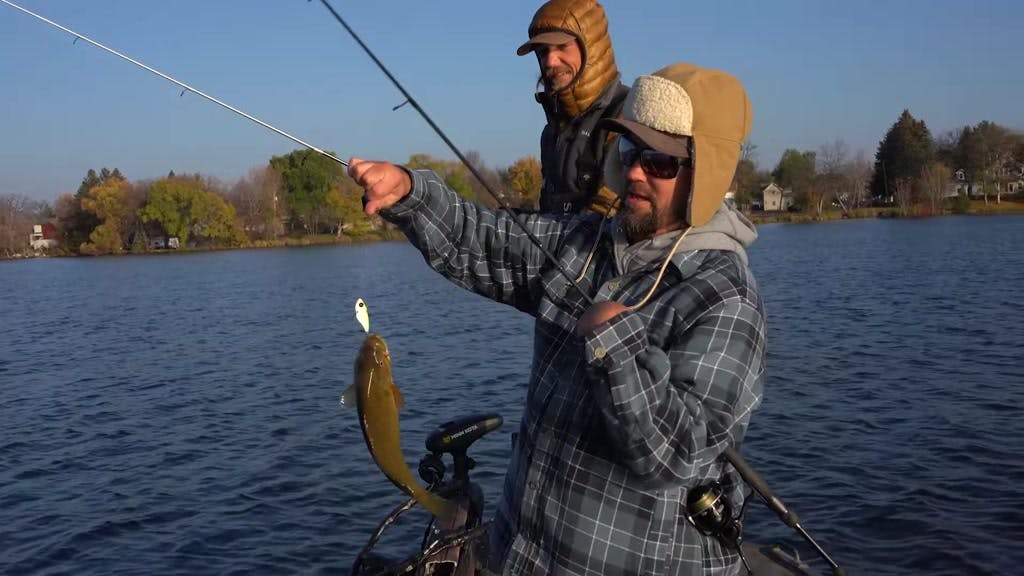
Getting started with blade bait fishing is relatively simple and doesn't require an extensive array of equipment. Here are the essential gear components to consider:
Choosing the Right Rod and Reel
- Opt for a medium-light spinning setup, which offers the perfect balance of sensitivity and strength for blade bait fishing. This setup allows you to feel the lure's action and detect subtle bites effectively.
- The spinning reel should be smooth and capable of handling light to medium lines, ensuring precise casting and retrieval.
Line Selection
- Line type and strength are crucial: Use 8-12 lb test monofilament or braided line for most blade bait fishing scenarios. The choice between monofilament and braided lines depends on personal preference and specific fishing conditions.
- Monofilament line offers stretch, which can be beneficial in absorbing the shock of aggressive strikes. Braided line, on the other hand, provides greater sensitivity and strength, allowing for better bite detection and a more direct connection to the lure.
Blade Bait Choices
- It's essential to select blade baits that closely mimic the local baitfish in your fishing area in terms of size and color. This increases the likelihood of attracting the target species.
- Keep a variety of blade baits in your tackle box to adapt to different water conditions and fish preferences.
Essential Tackle and Accessories
- Hooks: Ensure you have sharp and durable hooks for effective hook-sets. Consider having a range of hook sizes to match different blade bait sizes.
- Swivels: Use high-quality swivels to prevent line twisting and allow for natural lure movement.
- Weights: Have an assortment of weights to adjust the sinking rate and depth of your blade baits, especially when fishing in varying water depths.
- Leader materials: Depending on the clarity of the water and the target species, you may need to use leaders. Fluorocarbon leaders are often preferred for their invisibility underwater.
Additional Gear Recommendations
- Tackle box organization: Keep your blade baits and rigging components well-organized in a tackle box for easy access and efficient fishing.
- Protective gear: Consider wearing sunglasses and a hat for eye protection and to improve visibility on the water.
- Tools: Carry a pair of pliers for removing hooks and a line cutter for rigging.
By assembling these gear essentials for blade bait fishing, anglers can ensure they are well-prepared to handle various fishing conditions and effectively target a wide range of fish species. The simplicity of the setup makes blade bait fishing an accessible and enjoyable experience for both novice and seasoned anglers.
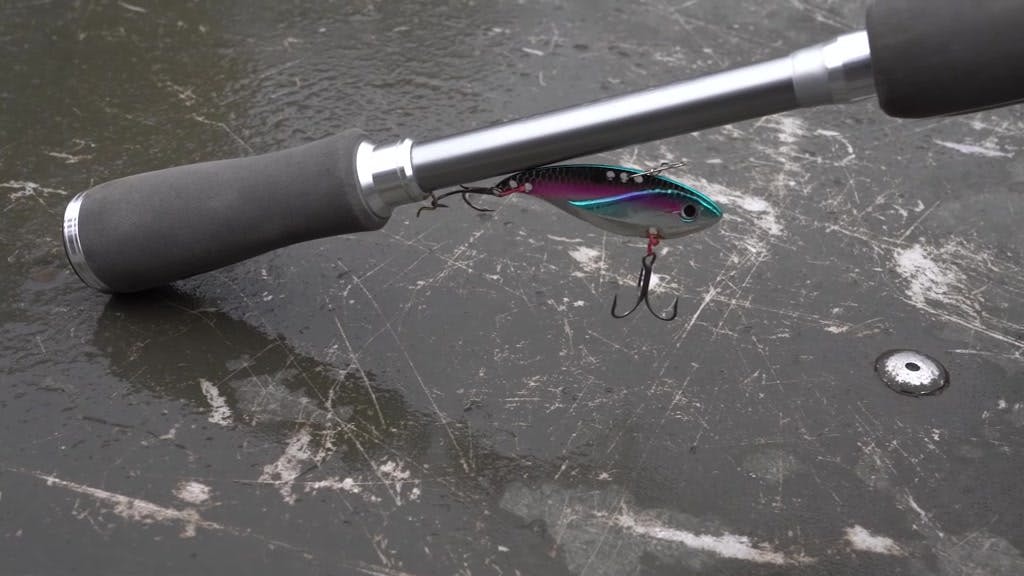
Blade baits come in an array of designs, each tailored to target different fish species and adapt to varying water conditions. This diversity allows anglers to choose a lure best suited to their specific fishing scenario, significantly enhancing the chances of a successful catch. Understanding the different varieties of blade baits and their applications is key to maximizing your fishing potential.
By familiarizing yourself with the different varieties of blade baits and their specific applications, you can make informed decisions that enhance your fishing experience. Whether targeting a particular species or adapting to changing water conditions, the right blade bait can be a decisive factor in your angling success.
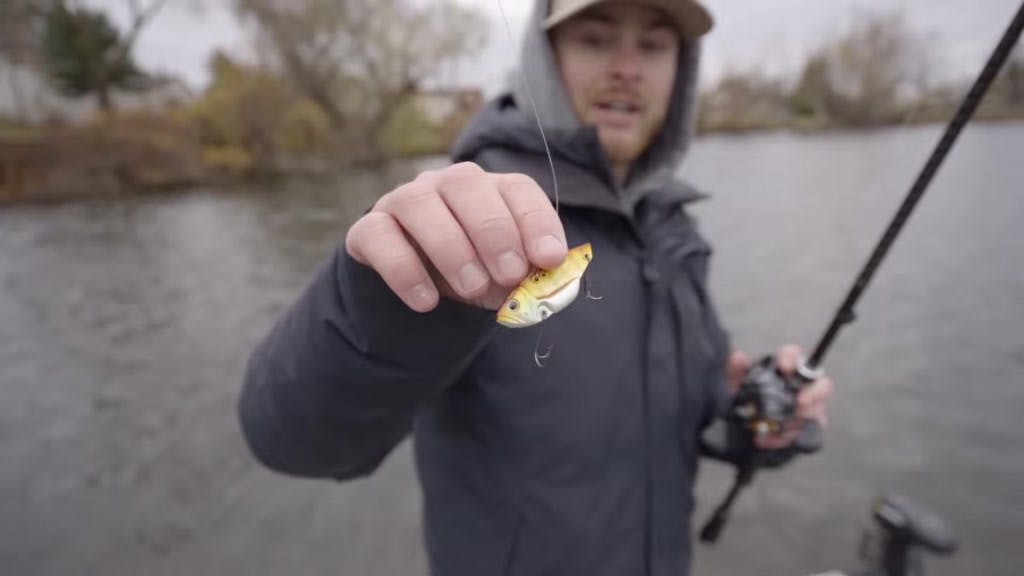
Choosing the right blade bait is a crucial decision that can significantly influence your fishing success. This selection should be based on several key factors, including the targeted fish species, water temperature, and water clarity. Understanding how these elements affect fish behavior will guide you in picking the most effective blade bait for your specific fishing scenario.
Targeted Fish Species
- Different fish species have varied preferences in terms of bait size, movement, and color. For instance, bass may be attracted to larger, more vibrantly colored blade baits, while walleye might prefer subtler colors and smaller sizes.
- Research the feeding habits and prey preferences of the species you are targeting. Choose a blade bait that closely mimics the natural prey of these fish in your fishing area.
Water Temperature Considerations
- In colder waters, fish metabolism slows down, making them less active and more selective in their feeding. Blade baits that can be retrieved slowly and offer subtle vibrations are more effective in these conditions.
- Conversely, in warmer waters, fish are generally more active and aggressive. Blade baits with a faster action and more pronounced vibration can trigger more strikes.
Water Clarity
- In clear waters, fish have better visibility and can be more discerning when it comes to striking a lure. Smaller, brighter blade baits that closely resemble the local forage can be more successful.
- In murky or stained waters, choose blade baits with stronger vibrations and contrasting colors to stand out in limited visibility.
Additional Selection Tips
- Experiment with different blade bait styles and actions. Sometimes, slight variations in movement or sound can make a significant difference in attracting fish.
- Keep a variety of blade baits on hand to adapt to changing conditions throughout the day. Factors like light levels, water current, and fish activity can shift, necessitating a change in tactics.
- Pay attention to the feedback from each fishing trip. Over time, patterns will emerge that can help refine your blade bait selection for future outings.
Selecting the perfect blade bait requires a blend of research, observation, and experimentation. By considering the specific needs of your targeted fish species, along with environmental factors like water temperature and clarity, you can greatly improve your chances of a successful and rewarding fishing experience.
Jacob Bros shares insights on selecting blade baits for fishing in Minnesota's 48-degree water. He highlights four favorite blade baits, each unique in vibration intensity and color options:
- Megabass Dyna Response: Known for its subtle vibration and Shad-like colors, this blade bait is ideal for river fishing. It features tinsel tail, sharp and strong stock hooks, and is particularly effective in imitating baitfish.
- Molix Trago Vib: Another subtly vibrating blade bait, the Molex Trigo Vibe stands out with its longer size, allowing for larger hook upgrades. It offers a variety of painted colors, different from the typical chrome options.
- Depps Circuit Vibe: This one is the most aggressive in terms of vibration. It's instantly noticeable upon casting and is particularly effective in sunnier conditions. It also features sharp, classic depth-style hooks and comes in various painted colors.
- Damiki Blade Bait: Jacob's personal favorite, especially in the 55 size or half-ounce. Known for its variety of colors and sizes, it's versatile for different depths and conditions. The bait features special hooks and braid loops, and is noted for its durability shown by its battle scars.
Jacob notes that while his go-to is the Dimiki, all four baits have their time and place, being useful throughout fall and into spring.
Jacob Bros explains his preferred setup for fishing with blade baits, specifically focusing on the Depths Circuit Vibe blade bait. His detailed setup includes:
- Line: He uses 10 or 12-pound fluorocarbon line, with Seaguar Invizx being his favorite choice. This line type offers the right balance of visibility and strength for blade bait fishing.
- Rod: Jacob opts for a casting rod, either seven feet or seven feet three inches in length, with medium power. The length and power of the rod are crucial for the proper presentation of the blade bait.
- Reel: He uses a casting reel, preferring either a 6.3:1 or a 7.3:1 gear ratio. The gear ratio influences the retrieval speed and efficiency of the blade bait.
- Technique: The technique involves casting the bait in 12 to 15 feet of water, letting it sink to the bottom, and then lifting the rod tip until the bait vibrates slightly. The bait should be hopped off the bottom and allowed to fall back down, with 3-5 seconds between hops. This method is particularly effective when fish are close to the bottom and in colder, more lethargic conditions.
- Lure: The Depths Circuit Vibe blade bait is noted for its sharp dual frog hook style, making it effective for this kind of fishing.
Jacob emphasizes the effectiveness of this setup, especially in cold water, stating that "there's nothing better that'll beat a blade bait" in such conditions. He demonstrates a successful catch using this method.
Polish Pete shares his unique approach to setting up for blade bait fishing, focusing on maximizing fish landing rates with specific gear and techniques:
- Line: Unlike others who may use braid loops for blade baits, Polish Pete prefers straight fluorocarbon. This choice is due to his difficulty in tying braid loops and the effectiveness of fluorocarbon in cold conditions.
- Rod: He emphasizes the importance of using a very soft rod, specifically a medium-light rod. In this video, he uses a 6-foot 8-inch Daiwa Steez rod with a fast, soft tip, ideal for up to a 3/8 ounce blade bait. However, he mentions upsizing to a half-ounce bait in certain situations.
- Reel: A fast spinning reel is his choice, with a high gear ratio. The reel used in the video is a Ballistic in an XH gear. The high gear ratio is critical for quickly tightening the line upon getting a bite to ensure the fish remains hooked.
- Technique: The key technique Pete mentions is to maintain tension on the line at all times. Any slack in the line or rod could result in losing the fish, as they can use the metal bait to leverage and throw it out of their mouths.
- Overall Strategy: Pete's approach is tailored to address the challenge of blade baits being one of the most fish-losing baits historically. His setup aims to capitalize on every bite and reduce the likelihood of losing fish.
Polish Pete's setup and strategy are particularly tailored to anglers who struggle with tying braid loops or prefer a simpler yet effective approach to blade bait fishing.
Seth Feider outlines his specific blade bait setup, emphasizing simplicity and efficiency for effective fishing, particularly for late fall and early winter smallmouth:
- Rod: Seth uses a Tatula Elite, a seven-foot drop shot rod designed by Cody Meyer. It's a medium-light rod, which he prefers for its softness, aiding in landing fish on small treble hooks typically used in blade baits.
- Reel: He pairs the rod with a 4000 size Daiwa Certate reel. The size and quality of the reel contribute to the overall effectiveness of the setup, especially in managing the line and maintaining control during fishing.
- Line: An eight-pound braid is his choice for the mainline, coupled with a notably long leader, approximately 15-20 feet, made of 12-pound fluorocarbon. Seth believes that the line size isn't as critical for getting bites since blade bait fishing is more about the reaction bite.
- Technique and Preferences: He discusses snagging issues common with blade baits, due to their bottom fishing nature, and suggests using a slightly heavier pound test line to help retrieve snagged baits more easily. For colors, he keeps it simple: a white blade bait for cloudy, foggy conditions and a chrome one for sunny days, relying on the bait's flash.
- Overall Approach: Seth's strategy is straightforward - find the fish and get the bait in front of them. The choice of rod, reel, and line, along with the simplicity in color selection, are all geared towards making blade bait fishing efficient and effective, especially for targeting smallmouth bass in colder seasons.
Seth Feider shares his insights and techniques for effectively fishing with a blade bait, focusing on subtlety and simplicity:
- Technique: The key to blade bait fishing, according to Seth, is subtlety, especially in cold water temperatures (low 40s to upper 30s). He notes that many anglers tend to overwork their bait, which may be effective in warmer waters but not in colder conditions.
- Retrieval Method: Seth prefers using the reel for fishing his blade bait. He suggests keeping the rod tip around 10 o'clock and turning the handle slightly, just enough to feel the bait vibrate two or three times before letting it fall back down. The colder the water, the longer the pause he recommends between each movement.
- Common Mistakes: He observes that a common mistake is excessively aggressive jigging and pulling. In colder temperatures, he emphasizes more gentle movements to get the bait vibrating, followed by a pause.
- Bite Detection: Most bites, Seth explains, occur right after the bait vibrates and starts to fall back down. He suggests being alert for a hard tap or a change in the feeling when turning the handle, which indicates a fish has taken the bait.
- Hook Setting and Landing Fish: He advises against a hard hook set due to the blade bait's heavy nature and the way smallmouth bass typically get hooked (usually in the bottom of the chin or corner of the lip). Despite the cold water, smallmouths are still active and can easily dislodge the hook.
In summary, Seth Feider's approach to blade bait fishing is marked by minimalistic and subtle techniques, especially suited for cold water temperatures, emphasizing the importance of a gentle touch and patient retrieval to increase the chances of a successful catch.